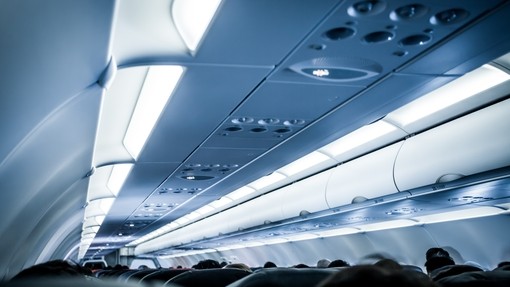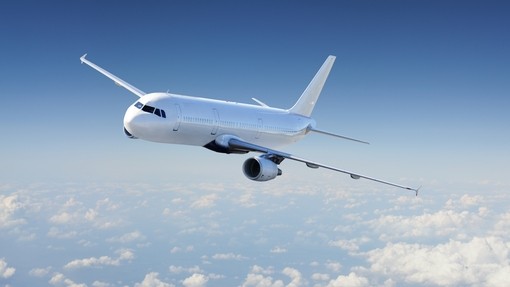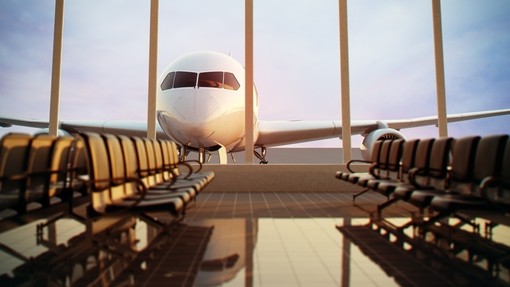HMRC VAT flat rate scheme and the travel industry history and criteria

Details
History
- Introduced in the 2002 budget and is governed by provisions in the VAT Regulations 1995
- Self-assessed tax
- This allows self-employed agents and small businesses to collect and pay a single flat rate of VAT over their gross annual turnover and makes accounting simpler
- No corresponding reclaim of input VAT
- Self-employed agents and small businesses only have to account for 10.5% VAT, which is based on the commissions earned. This means that they can retain the remaining 9.5% to cover their business costs (including office equipment)
Criteria
To benefit from the flat rate scheme, you must fulfil the following criteria:
- be a self-employed agent or a small business
- be VAT registered
- not required to use TOMS
- have a maximum taxable turnover of £150,000 per annum (excluding VAT) in the next 12 months
- not operate closely in ‘association’ with another business (which was the subject of the Travel Counsellors scenario, discussed below).
You cannot join the scheme if any of the following apply:
- you are not registered for VAT
- you use the second-hand margin scheme or the auctioneers’ scheme
- you are required to use the TOMS
- you are required to operate the capital goods scheme for certain capital items (see paragraph 15.6)
- you have stopped using the flat rate scheme in the 12 months before the date of your new application
- in the 12 months before your application you have either:
- accepted a compound penalty offer or;
- been convicted of an offence in connection with VAT or been assessed with a penalty for conduct involving dishonesty
- you are, or within the past 24 months have been, registered for VAT in the name of either a VAT group (see paragraph 3.7) or division
- you are, or within the past 24 months have been, eligible to join an existing VAT group treatment (see paragraph 3.7)
- your business is ‘associated’ with another one in the special way explained in paragraph 3.8
New VAT scheme as of 1 April 2017
- announced in the autumn statement of 23 November 2016
- HMRC website: change will ‘prevent abuse’ and make scheme fairer
- VAT flat rate of 16.5% will apply from 1 April 2017 for businesses with limited costs
- In the first year of VAT registration you get a 1% reduction in flat rate percentage
As of 1 April 2017, self-employed agents and small businesses also need to determine that they meet the definition of a ‘limited cost trader’ which will be included in the supporting legislation.
What are limited costs traders?
The Government’s note, titled ‘Tackling aggressive abuse of the VAT Flat Rate Scheme’ explains that a ‘limited cost trader’ will be defined as:
‘One whose VAT inclusive expenditure on goods is either:
- less than 2% of their VAT inclusive turnover in a prescribed accounting period; [or] our emphasis
- greater than 2% of their VAT inclusive turnover but less than £1,000 per annum if the prescribed accounting period is one year (if it is not one year, the figure is the relevant proportion of £1,000).’
The goods must be used exclusively for the purpose of the business, with the exclusion of the following:
- capital expenditure;
- food or drink for consumption by the flat rate business or its employees; and
- vehicles, vehicle parts and fuel (except where the business is one that carries out transport services – e.g. a taxi business – and uses its own or a leased vehicle to carry out those services).
The emphasis is on ‘goods’ which will affect any businesses that incur VAT on services such as rent or any other service which is seen as intangible in VAT terms.
Transitional provisions: If any current eligible businesses issue an invoice between 23 November 2016 and 31 March 2017 for a service to be performed on or after 1 April 2017 and for which they receive payment for, the supplies of those services shall – to the extent covered by the invoice or payment, be treated as if they are taking place on 1 April 2017 for the purposes of ascertaining the business’ relevant turnover. This is of importance to the travel industry for holidays booked before 1 April 2017, but commencing after the same – see section 8.2 of VAT Notice 733. Also see section 9.7.
Tackling aggressive abuse of the VAT flat rate scheme – technical note
Businesses using the scheme, or thinking of joining the scheme, will need to decide whether they are a limited cost trader. For some businesses – for example, those who purchase no goods, or who make significant purchases of goods – this will be obvious. Other businesses will need to complete a simple test, using information they already hold, to work out whether they should use the new 16.5% rate.
Goods must be used exclusively for the purpose of the business – this means you must not include the cost of any goods that are used in full or in part for your own private use. For example, printer ink and stationery that are used for both your office and your home would not be included. It would also exclude goods acquired with the intention of giving them away or donating them to a third party.
Capital expenditure – is the cost of any goods which are bought to be used in the business over a period of time (for example, longer than a year). Examples include equipment such as a compute, mobile phone, office furniture a tablet or a printer, even if they are not necessarily treated as capital assets for accounting purposes. The legislation that describes capital expenditure goods can be found in VAT Regulations 1195, 55A (1).
Operational issues
Agents can self-assess for limited cost status, but may be found to be ineligible if they do not meet the requirements set out above.
Businesses who are trading under the current VAT threshold may want to consider de-registering from VAT from 1 April 2017. Those who trade over this threshold may face having to withdraw from the VAT flat rate scheme on the grounds of ineligibility.
Turnover forecasting lower must have been reasonable.
“In ‘association’ with another business”
Paragraph 3.8 of VAT Notice 733
You are associated with another business in this special sense if:
- one business is under the dominant influence of another
- two businesses are closely bound by financial, economic and organisational links or another company has the right to give directions to you
- in practice your company habitually complies with the directions of another. The test here is a test of the commercial reality rather than the legal form
Will this result in review of agency arrangements (Hotels4U and Secrets Hotels)?
Although HRMC will look at the documentation as a starting point for the assessment, it will nevertheless look behind the franchise contract at the commercial reality of the relationship.
Will this result in immobility of small businesses and agencies?
If your business has been associated in this way with another in the last two years, but is not associated at the time you apply, HMRC can let you use the scheme if they agree in writing that your former association is not a risk to the revenue.
Is this likely to result in more people wanting to have a change in employment status?
HMRC website:
‘This will reduce the incentive for firms and agencies to move employees to self-employment to exploit VAT simplification aimed at small businesses’.
HMRC’s recent interest in the self-employed i.e. Uber, Hermes etc.
Conclusion:
- Read VAT Notice 733
- Penalty playground
- Assess both eligibility on financial grounds and contractual/factual position – but remember that complying with the directions of another company could be an expensive habit.
Turnover VAT Notice 733
If your forecast turns out to be too low, you will not be penalised provided that there were reasonable grounds for what you forecast. So it is sensible to keep a record of the figures you used to calculate your future turnover.
If your forecast has no reasonable basis, HMRC may exclude you from the scheme immediately, or from the date your ineligibility use began.
3.5 What if my turnover rises once I have joined the scheme?
You will cease to be eligible to use the scheme if the total value of your income for the year ending is more that £230,000.
However, if HMRC are satisfied that the total value of your income in the next 12 months will not exceed £191,500, you may be eligible to remain in the scheme.
The figures above include VAT inclusive income of all taxable and exempt supplies.
There are three ways of calculating your turnover. They are:
- Basic turnover – this is principally for those who deal mainly with VAT-registered businesses. If you are used to account for VAT on an invoice basis, this can be the simplest to operate. For details see Section 8.
- Cash-based turnover – this method is the Flat Rate Scheme equivalent of cash accounting. It is based, not on the time you make the supply, but on the time you are paid for your goods or services. This can be helpful if you give extended credit or your customers pay you late. For details see Section 9.
- Retailers’ turnover – this is essentially the same as a retail scheme and is best if you are a retailer selling goods to the public. For details see Section 10.
7.11 Can penalties apply to Flat Rate Scheme users?
Yes. Surcharge is applied in the normal way if you send your return in late or pay any VAT due after the due date. For details see VAT Notice 700/50 Default Surcharge.
Businesses with a turnover up to £150,000 are issued with a letter offering help and advice on how to avoid late returns and payments for the first time they pay late. If you make errors on your VAT return, then you may be liable to a misdeclaration penalty as well as being assessed for any VAT and default interest. See VAT Notice 700/42 Misdeclaration penalty and repeated misdeclaration penalty and VAT Notice 700/43 Default Interest.
Case with Travel Counsellors
HMRC has previously questioned whether the franchises of Travel Counsellors were truly independent. In June 2016, HMRC sent letters to homeworkers who were using the VAT flat rate scheme stating that they had been assessed as being ineligible. HMRC’s position was that because Travel Counsellors (the parent company) exerted a ‘dominant influence’ over its agents, those agents should not have been using the scheme as they fell within the exception.
At this stage, agents were facing having to repay up to four years’ backdated tax. However, as a result of ongoing negotiations involving HMRC, Travel Counsellors and the agents in December 2016, HMRC decided not to pursue this matter any further.
Information on home workers (Travel Counsellors etc.)
For the last 20 years, Travel Counsellors has provided a home worker scheme providing administrative (booking systems), financial (including card payment facilities), marketing, PR, IT and business development support to self-employed agents/small businesses. The scheme provides 24-hour support. In effect, this allows smaller ‘players’ in the travel industry to run and control their own business.
To become a home worker for Travel Counsellors, self-employed agents/small businesses are charged an initial start-up fee and are provided with training and equipment (laptop/computer, printer and webcam). They are then charged monthly business costs, which can be broken down as:
- Line rental - £20.00 + VAT + call charges
- Personal indemnity insurance - £7.00
- A monthly administration fee - £40.00 + VAT






